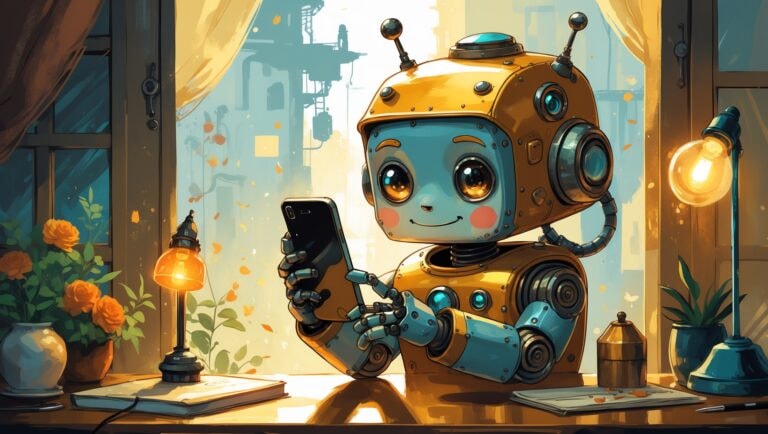
Storytelling Techniques Used by AI
Every great story has a technique behind it. Whether it’s the twist that keeps you hooked or the character arc that tugs at your heart, storytelling techniques are essential in creating narratives that resonate. But what if AI could master these techniques?
AI is writing stories now? But what does that even mean? This blog post looks at the future of storytelling with AI. We’ll talk about the cool things AI can do, like creating unique types of storytelling techniques and pushing the boundaries of what’s possible. But we’ll also think about the bigger picture – what it means for human creativity and the stories we tell.
What Are Storytelling Techniques? Definition & Examples
Storytelling techniques are basically the frameworks and strategies used to craft a narrative that resonates with an audience.
These techniques are there to guide how a story is told, working to make sure that the events and emotions in the story lead the audience to respond in a certain way. Effective storytelling techniques help to:
- Capture and keep the audience’s attention with intrigue, suspense and emotional connection.
- Share information effectively by making complicated ideas and concepts easier to understand and more interesting.
- Make people feel emotions, and relate to universal human experiences and emotions such as joy, sadness, fear and hope.
- Build relationships through empathy and understanding between the storyteller and the audience.
There are several classic storytelling techniques, each with its unique approach to structure, tone, and impact:
- Monomyth (Hero’s Journey)
The hero’s journey, also known as the monomyth, is one of the most well-known storytelling structures. It follows a hero called to adventure, faces trials, and ultimately returns transformed, often bringing wisdom or a reward. You’ll find this narrative structure in stories ranging from ancient myths to modern blockbusters like Star Wars or The Lion King. - In Media Res
One of the storytelling techniques examples is in media res, which means starting the story in the middle of the action (often at an important or exciting moment). This grabs the audience’s attention immediately and keeps them interested as the story continues. Then, the story goes back to explain how the characters got into that situation. This is a great way to hook your audience right from the start and make them curious. - Nested Loops
Nested loops mean you have multiple stories within one overarching narrative. Each smaller story helps to explain or expand upon the main message. This technique is often used in speeches or presentations, where a speaker shares personal anecdotes or case studies that all tie back to a core idea. - Sparklines
This technique compares the current situation with an ideal or improved future, making a strong case for change. By showing the difference between the “normal” and the “out of the ordinary”, sparklines draw attention to issues that need to be solved and motivate the audience to take action. Famous speeches, such as Martin Luther King Jr.’s I Have a Dream, effectively use sparklines to inspire and spark hope in their listeners. - The Mountain
Want engaging storytelling techniques? This structure is all about rising tension and building towards a climax. Unlike the hero’s journey, it doesn’t always guarantee a happy ending. The story starts by setting the scene, followed by challenges that gradually increase in intensity, leading to a climactic moment. Like in serials or TV shows. - Converging Ideas
In this structure, different stories or ideas come together to create one main conclusion. It’s often used to show how different thoughts, events, or characters come together to create one big result. This technique can show how working together can get results, or how a problem can be solved when people work together.
AI: The Next Chapter in Storytelling
Let us guess your variants. Speeding up the process of writing? Generating ideas?
Yes, correct answers. But what about more?
Now, writers can work together with AI to exchange ideas, improve them, and get better results quickly. Like brainstorming with an extremely smart and experienced co-author who never gets tired and always has new ideas.
This partnership doesn’t replace the writer but works with them to come up with new ideas. For example, AI romantic story generator can help create unexpected plot twists, deepen character motivations and different storytelling techniques, or suggest alternative narrative directions that may not have been considered before.
The potential of AI could be used to create personalised storytelling experiences which is hard to get with storytelling basics techniques. This is something that is already being explored in video games and interactive media. Imagine a book that changes its plot based on what the reader does or a story that changes to fit the reader’s feelings, giving a very special experience every time.
With advanced analytics, AI can learn what types of narratives resonate with individuals, allowing writers to craft stories that feel deeply personal and engaging.
Key Storytelling Techniques in AI Stories: The Case of Talefy
One such platform that is making news in the AI storytelling space is Talefy, an innovative AI tool that helps authors create dynamic, engaging stories using advanced technology. But what makes Talefy’s approach to storytelling special? Why do their techniques of storytelling work so well?
1. Adaptive Plot Development
Talefy is awesome because it lets you shape the story as you go! Instead of just reading, you get to make choices that change how the story unfolds. It’s like having your personal storyteller who adjusts the plot based on what you pick.
How does it work?
In traditional stories, the plot is fixed, leading to a linear experience for the reader. However, Talefy’s adaptive plot technique allows for a more personalized experience. By analysing user answers, AI can guide the story in new directions, with a variety of outcomes.
In genres like fantasy, adventure and mystery, being able to switch up the plot makes readers feel more immersed, as they feel like their decisions have consequences. The fact that the plot keeps changing also makes readers want to keep going, so they can see what will happen.
2. Character Development
Talefy’s gives writers the tools to create characters that feel very real and which change and grow over the story. This is done by looking at what readers like and what characters do, to suggest things that are unique to each character and the problems they have.
Why does this work?
In most stories, characters are introduced, face challenges, and change over time. Talefy adapts character growth to each individual narrative. As the reader interacts with the story, the Ai suggests subtle changes to the character’s traits, motivations, and actions based on earlier events or decisions made by the reader.
These techniques for storytelling not only help create characters that are more relatable and three-dimensional but also keep the reader emotionally connected to the story.
3. Interactive World-Building
Talefy uses A.I. to help writers create expansive and interactive worlds that respond to the reader’s decisions.
Through these text and visual storytelling techniques, Talefy generates detailed settings, characters, and lore that are seamlessly woven into the narrative. Readers can explore different locations, meet various characters, and discover new storylines as the world around them changes.
How does this work?
World-building is one of the most critical aspects of storytelling, especially in genres like fantasy or sci-fi. Talefy helps out by letting users build rich, immersive worlds. And the visual part makes it feel alive.
The Upsides & Downsides of AI in Storytelling
Below is a breakdown of the pros and cons of some of AI’s creative storytelling techniques, to help you better understand where AI excels and where it might fall short.
|
Awesome Things AI Can Do |
Not-So-Awesome Things |
|
AI can come up with wild ideas you never thought of, like crazy plot twists and characters you’d never expect. |
Sometimes AI stories feel a bit samey because they learn from what’s already been written. |
|
AI lets you shape the story with your choices, making it feel like it’s just for you. |
Focusing too much on making it “your” story might mean it misses out on deeper emotions. |
|
Anyone can use AI to tell stories, even if they don’t think they’re a writer. |
We need to think about fairness, copyright, and making sure AI doesn’t spread harmful ideas. |
|
AI can help with the boring parts of writing, like brainstorming and coming up with outlines. |
Conclusion: Weighing the Benefits and Challenges
The key is to find the right balance – using the strengths of AI to enhance the storytelling experience, while being aware of its limitations.
Writers must ensure that AI is used as a tool to complement their creativity, not replace it, and that the human touch remains at the heart of the story.
Post like this

5 Key Elements of a Story
Nov 05, 2025
11 min read

What Is The Best AI Story Generator: How Talefy Transforms Your Writing Process
Mar 12, 2025
6 min read

How to Make Interactive Instagram Stories Using Talefy AI
Feb 08, 2025
8 min read

Why Interactive Content Creation Beats Static Content
Dec 05, 2024
8 min read